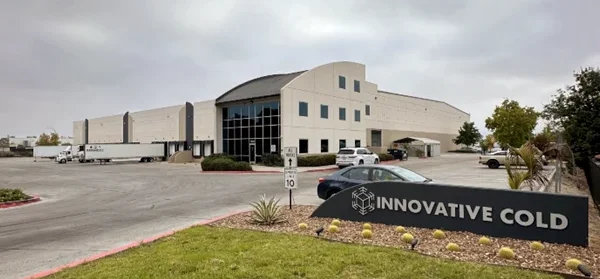
In this video, Jeff Buxton discusses IIAR6 and IIAR9 compliance with Bill Beadie, Principal Industrial Hygienist @ Maul Foster & Alongi, Inc.
Transcript
0:01
Hi, Jeff Hi, Bill.
0:02
How are you doing today?
0:03
No, I glad you were able to meet today we’ve been having great discussions here together 2 nerds, you know got to get the industrial hygienist and engineer together Viral video for viral video Industrial hygienist and engineer Yeah.
0:18
So the old reason I was so glad to meet with you today was for this new notice coming out from the EPA for the new initiative to go out and specifically inspect and the systems that are under £10,000 for ammonia refrigeration.
0:33
The main question I want to get out today is what are some things or what do you think are the items that an end user of a money refrigeration should really have in line to be best prepared for when those inspections come?
0:46
Yeah.
0:47
Well, so EPA is focusing on these smaller systems because they like, I believe that the risk of an ammonia leak is significant even if you’ve got less than 10,000 lbs of pneumonia.
1:02
And the reason they have a safety program is to reduce your risk of pneumonia leak.
1:06
So if you have one of these smaller systems and you’re concerned about the EPA showing up, they’ve made it clear.
1:13
Hey, we’re going to prioritize a couple of things.
1:16
One, do you have a process hazard analysis And two, have you been coordinating with your local responders?
1:24
And so the way that they’re evaluating coordination with local responders is are you up to date on your Tier 2 hazardous material inventory report under after the emergency planning Community Rights No Act?
1:36
And then for the process hazard analysis, they’re going to look to see, have you got a smart group of people in A room to talk through scenarios or ways in which you could have an accident?
1:46
Have you identified the safeguards and have you identified recommendations to reduce your risk?
1:52
Contrary to what a lot of people think, where a lot of people believe that the satisfied regulator, you need to have a lot of paperwork and show them a lot of paperwork.
2:01
I believe, and I believe, I think EPA also believes that really what you need to do is show that you’ve done something to reduce your risk of an accident.
2:11
And that may not really be about a bunch of paperwork.
2:14
That may be about smart people looking at your system to evaluate.
2:18
Has it been designed, inspected and maintained?
2:21
Is it operating in a Safeway?
2:23
And for ammonia, that means following standards such as those set by the International Institute of Ammonia Refrigeration or IIAR.
2:32
And a really important one there is IIAR 9, which sets out minimum safety criteria for an existing system.
2:39
And there’s a suggestion that there’s a gap analysis there.
2:42
Someone, someone who’s smart looks through the system and make sure that you’re following that standard.
2:48
So I have a question for you, Jeff.
2:51
Does IR pros have smart people who understand refrigeration systems that can crawl through and take a look and see, are you or are you not following this standard?
3:00
Yeah, absolutely.
3:01
And certainly we do have those guys that are very knowledgeable that would go out and fill out the and evaluate the system to follow what IIAR 6 says and also what IIAR 9 says.
3:11
One of the things that I think really you can look for with a good refrigeration contractors that they understand that if you’re already going out there to do the mechanical integrity inspection and this is certainly higher pros perspective, you might as well go ahead and do the safety inspection at the same time.
3:26
And the safety inspection, it really just is that extra step to focus on what IIAR 9 says as the minimum safety requirements for that system to make sure that as you’re going through that system and looking at the deficiencies in from an IIAR mechanical perspective, then you also can see what the deficiencies are from the bigger perspective of safety.
3:49
OK, well, so I have a question for those people who have more complete lives than I have and don’t geek out on IIR standards.
3:59
You said something that might be confusing.
4:01
You said, well, while we do this mechanical integrity inspection, we can also look at compliance with IIR 9.
4:07
But wait, aren’t those the same things?
4:09
So there’s this standard IIAR 6 about maintenance and they have these checklists that are in there.
4:17
And a lot of people, I think believe with good reason that filling out those checklists means that you’ve evaluated the safety of your system.
4:25
But I heard you suggest something else that maybe it’s not just filling out those checklists in IIR six, that this IIAR 9 analysis is above and beyond that.
4:34
Did I understand that correctly?
4:36
Absolutely, yes.
4:37
OK.
4:37
Yeah, that is my understanding is that IIAR 9 is a separate safety and evaluation of the system, separate from the mechanical integrity inspection, which is a part of those forms at the end of IIAR 6.
4:47
Well, that just cleared up a lot of confusion.
4:50
Yeah, I think that’s great.
4:51
So with this, hopefully people can be in a position to both be compliant with regulations, but more importantly, reduce the risk of having an accident.
5:02
If you focus on your risk, the compliance tends to follow.
5:05
So have smart people do a process hazard analysis, have smart people take a look through your system, make sure it’s designed and inspected and maintained properly, and everything should work.
5:15
Yep, agreed.
5:16
All right, awesome.
5:17
All right.
5:17
Thanks for your time.



